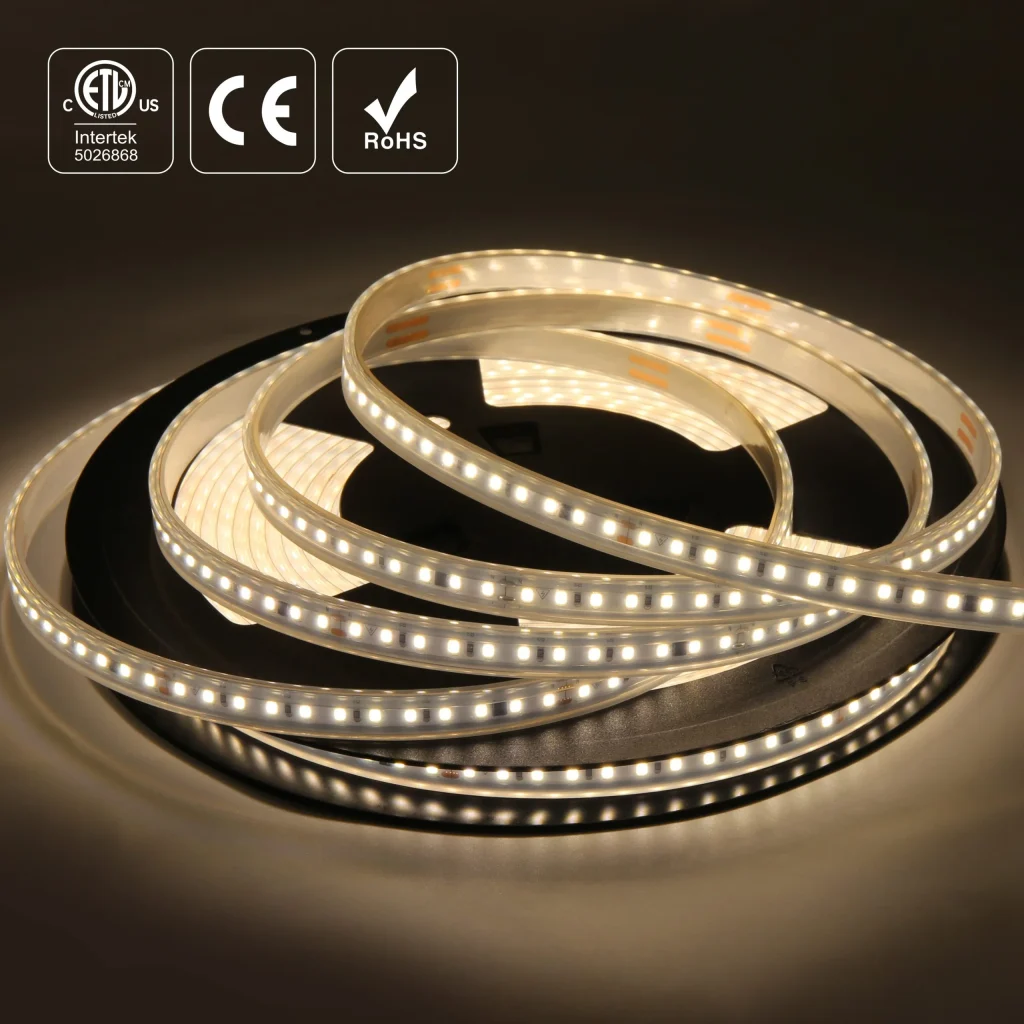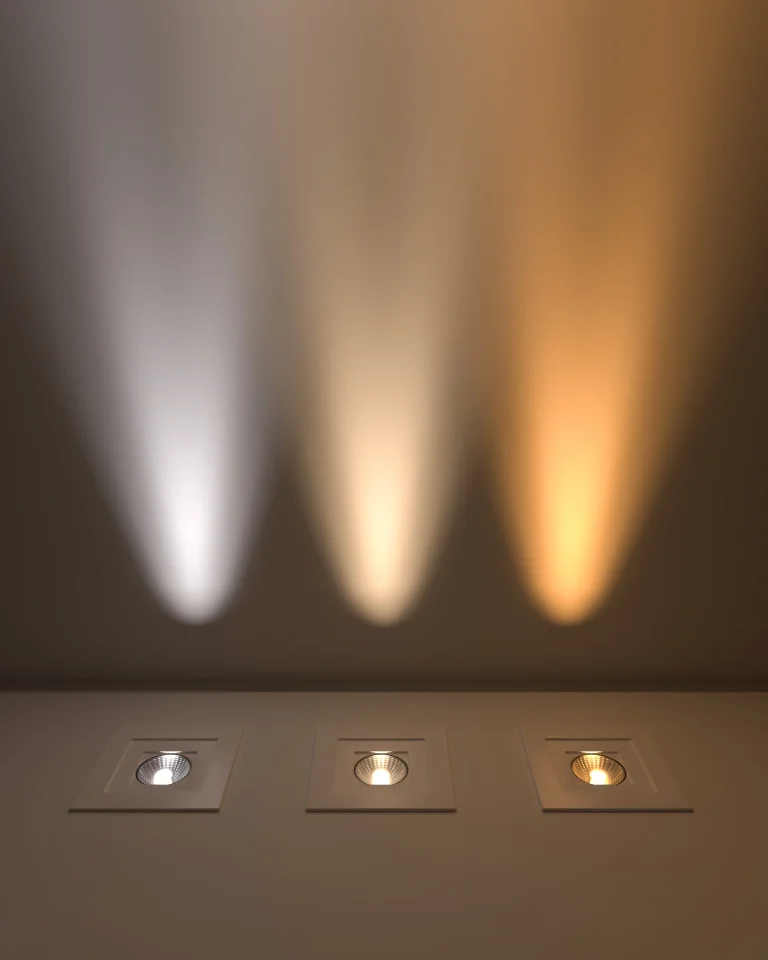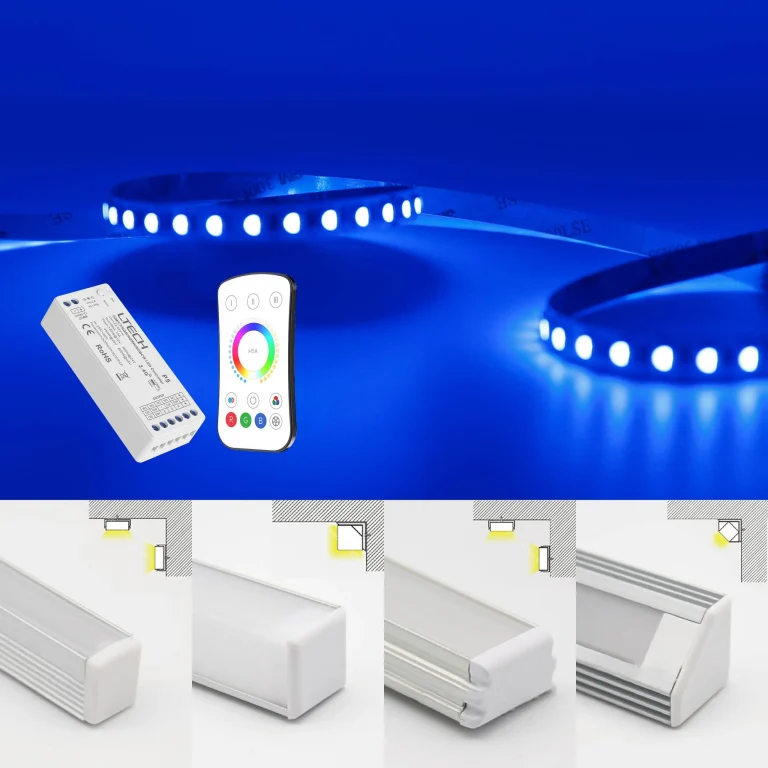Voltage reduction—the decrease in electrical potential across lengthy circuits—creates major difficulties in LED lighting systems spanning more than 50 meters. This often results in diminished brightness, color variation, and irregular illumination. Primary causes include conductor resistance, inadequate power source capability, and thermal buildup, especially in high-demand setups. Practical remedies involve employing heavier-gauge copper wiring, premium power converters, and divided circuit arrangements to share electrical demand. Sophisticated methods such as signal boosters and regulated-current controllers additionally improve operation, guaranteeing even light distribution in business and structural environments. By applying these approaches with precision-crafted elements, technicians can maximize power conservation, prolong LED durability, and sustain perfect lighting standards across extensive installations.
Understanding Voltage Drop in LED Lighting Systems
The Principle of Voltage Reduction and LED Operation
Voltage reduction describes the loss of electrical potential as electricity moves through wiring. For LED arrangements, this occurrence can markedly influence functionality. As voltage declines along an LED strip’s length, luminosity may weaken, particularly at the terminal section. This irregular lighting can undermine both visual appeal and practical use in situations demanding uniform brightness.
Elements Causing Voltage Reduction in Lengthy LED Setups
Multiple aspects contribute to voltage decline in extensive LED configurations. Wire resistance stands as a key factor; slender conductors or greater spans amplify resistance. Moreover, elevated current needs worsen voltage depletion, as does limited power source output. Choosing proper wire thickness and power allocation proves vital for reducing these problems.
Importance of Addressing Voltage Drop in Large Installations
For projects covering over 50 meters, voltage reduction becomes a pressing issue. Fading brightness and color variation can make an installation inadequate, especially in business or design lighting scenarios where consistency is crucial. Managing voltage drop preserves peak operation and increases your LED array’s service life.
Primary Difficulties with LED Installations Over 50 Meters
Power Source Constraints for Extensive LED Arrays
Power units made for shorter spans may falter with lengthy runs, causing poor performance or excessive heat. Picking a premium-efficiency power source with sufficient capacity is necessary for sustaining steady operation across long distances.
Signal Weakening and Lighting Quality Impacts
Signal deterioration happens when electrical impulses lose strength over distance, influencing both luminosity and color precision. This concern is especially noticeable in RGB or adjustable white LEDs needing exact signal management for changing effects.
Thermal Control Challenges in Lengthy Setups
Heat accumulation can grow troublesome in extended arrays because of heightened current movement and resistance. Inadequate cooling not only hinders performance but also quickens component deterioration, shortening their usable duration.
Solutions for Optimizing Voltage in Long LED Runs
Effective voltage management in extended LED installations requires careful consideration of three critical components: conductor sizing, power supply selection, and circuit configuration. Proper wire gauge directly impacts resistance and voltage drop, while high-efficiency power converters ensure stable operation. Implementing parallel circuit designs provides both performance redundancy and load distribution. This section examines these key factors in detail, offering practical recommendations for maintaining optimal illumination across 50+ meter installations, including specialized solutions from industry leaders like RAYMATES. By addressing these electrical fundamentals, installers can achieve consistent brightness and extended system longevity in large-scale LED projects.
Selecting Appropriate Wire Thickness for Extended Spans
How Conductor Size Influences Voltage Reduction
Wire diameter immediately affects resistance; heavier cables demonstrate lower resistance, decreasing voltage loss over distance. Employing properly sized conductors reduces power waste and maintains uniform lighting.
Suggested Wire Types for 50+ Meter Installations
For projects beyond 50 meters, prefer low-resistance copper wiring with suitable gauge dimensions matching the electrical demand. For example, 12-gauge wire may work well for high-capacity uses.
Improving Power Sources to Reduce Waste
Choosing Premium-Efficiency Power Converters
Top-quality power units transform more input power into functional output while limiting heat waste. They prove especially valuable for long runs where maintaining brightness is critical.
Functions of Steady-Voltage and Steady-Current Controllers
Steady-voltage regulators preserve consistent output regardless of input variations, perfect for lengthy strips needing even illumination. Conversely, steady-current devices manage electricity flow, safeguarding LEDs from excessive current damage.
Implementing Divided Circuit Designs
Advantages of Distributing Electrical Demand
Divided circuits spread power needs across several paths, easing burden on individual lines and lessening voltage drop concerns. This method also improves backup capability; if one path fails, others remain functional.
Real-World Applications Using RAYMATES Solutions
Consider premium options like RAYMATES’ High-Voltage LED Strips engineered particularly for long runs up to 50 meters without sacrificing brightness or uniformity. Their creative designs ease setup while delivering dependable operation across extended distances.
Enhanced Methods for Superior LED Performance
How Signal Boosters Improve LED Arrangements
Signal enhancers serve vital roles in preserving LED array quality, particularly for lengthy spans. These units strengthen electrical impulses, keeping consistent brightness and color precision throughout extended runs. Without them, signal weakening can cause irregular lighting, especially troublesome for business or design projects needing uniformity.
For installations over 50 meters, selecting high-grade signal boosters made for such uses is critical. These devices maintain strong power and control signals across entire LED strips, avoiding problems like dimming or flickering at distant ends. Their inclusion streamlines setup while boosting total effectiveness.
Benefits of Brightness Adjustment Systems
Light modulation setups help optimize energy use and increase LED longevity. By modifying intensity according to environment or user settings, these systems decrease unnecessary power use. Successful implementation requires choosing compatible regulators supporting modern technologies like PWM or 0-10V modulation.
When adding dimming features to long runs, verify controllers allow exact modifications without affecting quality. This harmony is essential for smooth changes and preserving color uniformity throughout the LED network.
RAYMATES Product Suggestions for Large LED Projects
Advantages of Premium Power Converters
Superior power units are crucial for maintaining steady output in lengthy installations. Built to manage heavy loads, these devices minimize voltage drop and prevent overheating—common issues in extended setups. Their durable construction and high performance support longer service life while decreasing energy loss.
Reasons to Select Robust, Effective Wiring
Wire selection greatly affects LED system dependability. Sturdy, low-resistance cables are necessary for reducing voltage drop over distance. Copper materials ensure superior conduction and lower energy waste, providing even lighting throughout the installation.
How Specialized Add-ons Aid Installation
Components like junctions, extension wires, and fastening hardware simplify setup while improving system stability. Quality junctions create secure links resistant to wear, while extension wires offer design flexibility. Mounting hardware and aluminum rails enable tidy installations while improving heat removal, further enhancing operation.
Expert Guidelines for 50+ Meter LED Installations
Planning Layouts to Reduce Power Loss
Centralized power allocation is an effective method for decreasing voltage drop in long runs. Placing power units at midpoint locations shortens the distance between each section and its energy source. This arrangement guarantees more consistent voltage levels across all LEDs.
Additionally, separating large installations into independently powered segments can further improve quality. This segmented method eases problem-solving and upkeep while boosting total effectiveness.
RAYMATES- Recommended Tools and Methods
Checking voltage during installation is crucial for spotting potential issues before they impact system quality. Devices like multimeters enable voltage measurement at multiple strip locations, ensuring uniformity throughout the run.
Using sophisticated diagnostic methods helps identify irregularities early, conserving time and effort in future maintenance. Routine checks also confirm your system works within safe limits, prolonging its operational life.
FAQs
Q1: Which wire type works best for 50-meter LED projects?
A: Choose sturdy copper wiring with an appropriate low-resistance gauge for high-capacity applications to effectively minimize voltage drop.
Q2: Are particular power converters suggested for lengthy LED runs?
A: Premium-efficiency power units engineered for extended loads work best for maintaining steady output over distance.
Q3: How can uniform brightness be achieved in 50+ meter LED configurations?
A: Include signal boosters to strengthen electrical impulses and prevent weakening across long spans.









